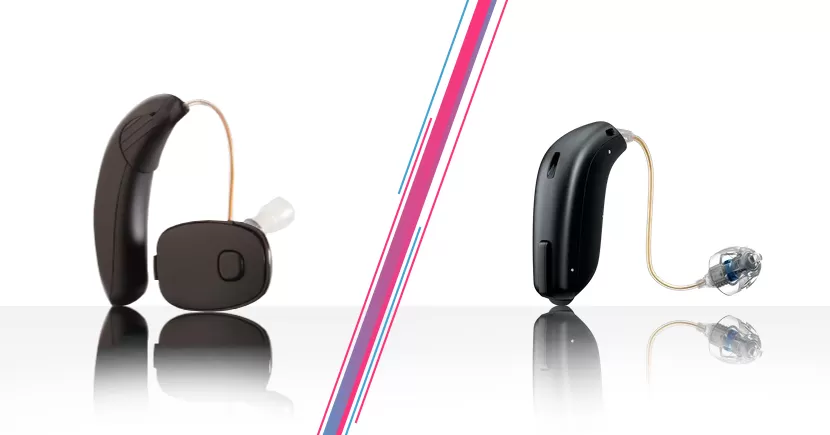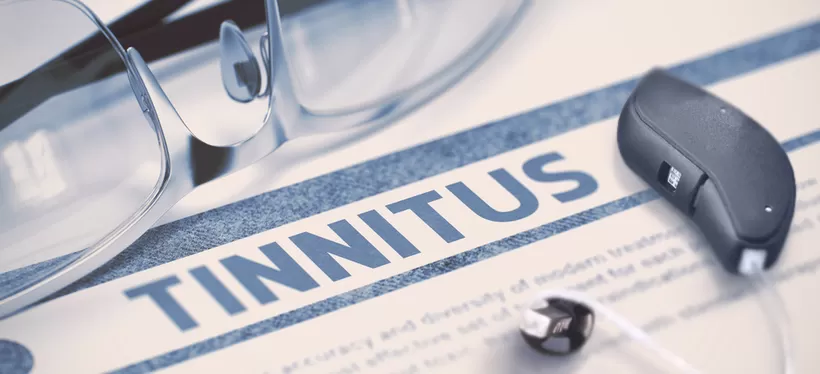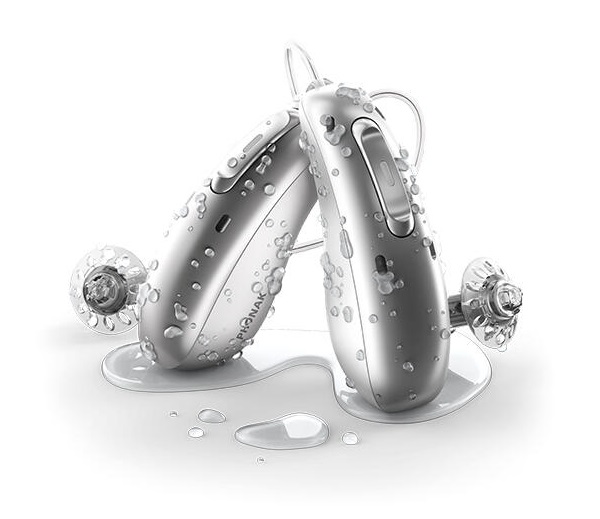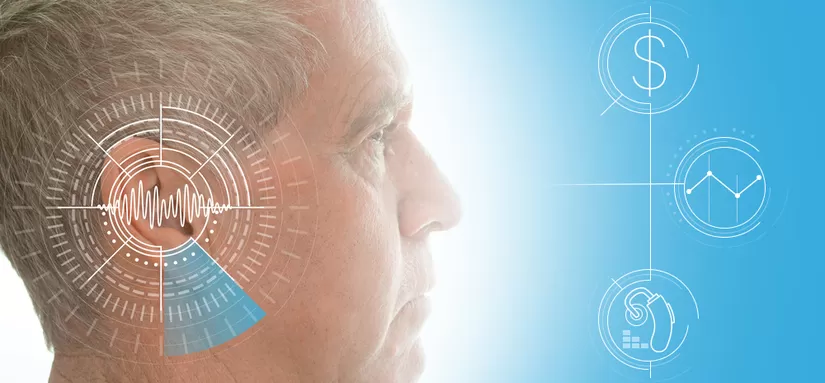1.
Dome
The dome slips over and encloses/protects the receiver/speaker. Domes are made with medical-grade silicone. They come in different shapes and sizes—your hearing care professional will help you pick the right size and style. Selecting the appropriate dome will change the sound performance of your hearing aids, so if you’re not achieving satisfying results with your hearing aids, your hearing provider will often consider trying a different dome style.
In some cases, such as for wearers with severe or profound hearing loss, an earmold will be used instead of a dome.
2.
Indicator light
The LED indicator light shows the charging state of the battery. The light will turn orange when the hearing aid is charging, and green when fully charged. When removed from the charger or turned on, the light will turn green after approximately six seconds, confirming that it is ready for use.
3.
Microphone
The microphone picks up the sound from the environment and sends it into the hearing aid for processing. You’ll mostly want to leave the microphone alone, but periodically check it to ensure it’s not being plugged up by hair care products or oils.
4.
Receiver
The receiver AKA speaker delivers the sound into the ear. Oticon receivers are available in 3 different strengths, standard (60), moderate (85), power (100). Your ZipHearing provider will help you determine the appropriate gain (strength/power) receiver based on the results of your hearing test. Expect to have to replace your receivers every year or so, and this is something that usually takes just a few minutes with your local ZipHearing provider.
5.
Receiver wire
This thin, plastic-coated wire transmits power and signals to the receiver/speaker, which is worn inside the ear. Oticon receivers are available in 5 different lengths: 0,1,2,3 & 4. Your ZipHearing provider will help you determine the appropriate length of receiver wire, by measuring your ear. In cases when your ZipHearing provider is unsure of the exact receiver length that will work best for you, we’re happy to send out a few different receiver lengths for you to try.
6.
Rechargeable or disposable batteries
The model shown is powered by a rechargeable lithium-ion battery, expected to last 16-24 hours/day. The battery takes about 3 hours to fully charge, and a 30 minute quick charge will get you about 6 hours of power. Most people do buy the rechargeable model, and simply put the aids in a charger next to their bed at night, allowing them to wake up with fully charged hearing aids. Other models shown on this page (below) can be powered by a disposable size 312 or size 13 battery. These batteries will last anywhere from 5-10 days, depending on how much Bluetooth streaming you do. Your purchase from ZipHearing includes a 1 year supply of disposable batteries.
7.
Rocker switch
The rocker switch can be programmed by your hearing provider to have different functions, depending on your needs. Some of these functions include volume and program control, on/off functionality, flight mode, and answering/ending phone calls. Some people use these buttons exclusively to control the hearing aids, and others use the app to control the hearing aids. Others (most people), use a combination of both the app and rocker switch to make adjustments to their hearing aids. You likely won’t have to use these buttons often, but some people find them handy to make quick adjustments to their hearing aids when they change listening environments (ie, entering a noisy restaurant, or a quiet room). Your hearing provider will go over the options available and make sure your hearing aids are set up to your ideal preferences.
8.
Water resistant
Oticon Zircon has an IP68 rating, with all vital components nano-coated inside and out. As a result, Real is protected from dust getting inside and can withstand exposure to water, though caution around water is highly recommended. Prolonged exposure to water can cause irreparable damage to Oticon Zircon, in which a one-time replacement device would be issued during your 3 year warranty, subject to a $350 deductible payable to your local ZipHearing provider .
9.
Wax filter
When it comes to maintaining your hearing aids, this is where you’ll spend most of your time. The wax filter (mostly) prevents wax and oils from getting into the receiver/speaker. Your hearing provider may supply you with Oticon ProWax filters enabling you to periodically change these on your own. Some people never have to change these wax filters, others have to change them weekly. Your purchase includes 1 pack of wax filters, and you can purchase additional wax filters directly from your ZipHearing provider, or through a number of sites online such as Amazon.
10.
Dome
The dome slips over and encloses/protects the receiver/speaker. Domes are made with medical-grade silicone. They come in different shapes and sizes—your hearing care professional will help you pick the right size and style. Selecting the appropriate dome will change the sound performance of your hearing aids, so if you’re not achieving satisfying results with your hearing aids, your hearing provider will often consider trying a different dome style.
In some cases, such as for wearers with severe or profound hearing loss, an earmold will be used instead of a dome.
11.
Indicator light
The LED indicator light shows the charging state of the battery. The light will turn orange when the hearing aid is charging, and green when fully charged. When removed from the charger or turned on, the light will turn green after approximately six seconds, confirming that it is ready for use.
12.
Microphone
The microphone picks up the sound from the environment and sends it into the hearing aid for processing. You’ll mostly want to leave the microphone alone, but periodically check it to ensure it’s not being plugged up by hair care products or oils.
13.
Receiver
The receiver AKA speaker delivers the sound into the ear. Oticon receivers are available in 3 different strengths, standard (60), moderate (85), power (100). Your ZipHearing provider will help you determine the appropriate gain (strength/power) receiver based on the results of your hearing test. Expect to have to replace your receivers every year or so, and this is something that usually takes just a few minutes with your local ZipHearing provider.
14.
Receiver wire
This thin, plastic-coated wire transmits power and signals to the receiver/speaker, which is worn inside the ear. Oticon receivers are available in 5 different lengths: 0,1,2,3 & 4. Your ZipHearing provider will help you determine the appropriate length of receiver wire, by measuring your ear. In cases when your ZipHearing provider is unsure of the exact receiver length that will work best for you, we’re happy to send out a few different receiver lengths for you to try.
15.
Rechargeable or disposable batteries
The model shown is powered by a rechargeable lithium-ion battery, expected to last 16-24 hours/day. The battery takes about 3 hours to fully charge, and a 30 minute quick charge will get you about 6 hours of power. Most people do buy the rechargeable model, and simply put the aids in a charger next to their bed at night, allowing them to wake up with fully charged hearing aids. Other models shown on this page (below) can be powered by a disposable size 312 or size 13 battery. These batteries will last anywhere from 5-10 days, depending on how much Bluetooth streaming you do. Your purchase from ZipHearing includes a 1 year supply of disposable batteries.
16.
Rocker switch
The rocker switch can be programmed by your hearing provider to have different functions, depending on your needs. Some of these functions include volume and program control, on/off functionality, flight mode, and answering/ending phone calls. Some people use these buttons exclusively to control the hearing aids, and others use the app to control the hearing aids. Others (most people), use a combination of both the app and rocker switch to make adjustments to their hearing aids. You likely won’t have to use these buttons often, but some people find them handy to make quick adjustments to their hearing aids when they change listening environments (ie, entering a noisy restaurant, or a quiet room). Your hearing provider will go over the options available and make sure your hearing aids are set up to your ideal preferences.
17.
Water resistant
Oticon Zircon has an IP68 rating, with all vital components nano-coated inside and out. As a result, Real is protected from dust getting inside and can withstand exposure to water, though caution around water is highly recommended. Prolonged exposure to water can cause irreparable damage to Oticon Zircon, in which a one-time replacement device would be issued during your 3 year warranty, subject to a $350 deductible payable to your local ZipHearing provider .
18.
Wax filter
When it comes to maintaining your hearing aids, this is where you’ll spend most of your time. The wax filter (mostly) prevents wax and oils from getting into the receiver/speaker. Your hearing provider may supply you with Oticon ProWax filters enabling you to periodically change these on your own. Some people never have to change these wax filters, others have to change them weekly. Your purchase includes 1 pack of wax filters, and you can purchase additional wax filters directly from your ZipHearing provider, or through a number of sites online such as Amazon.



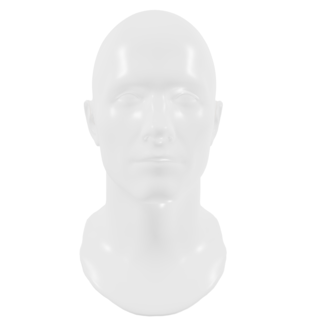










->getDescriptorURL()?>)














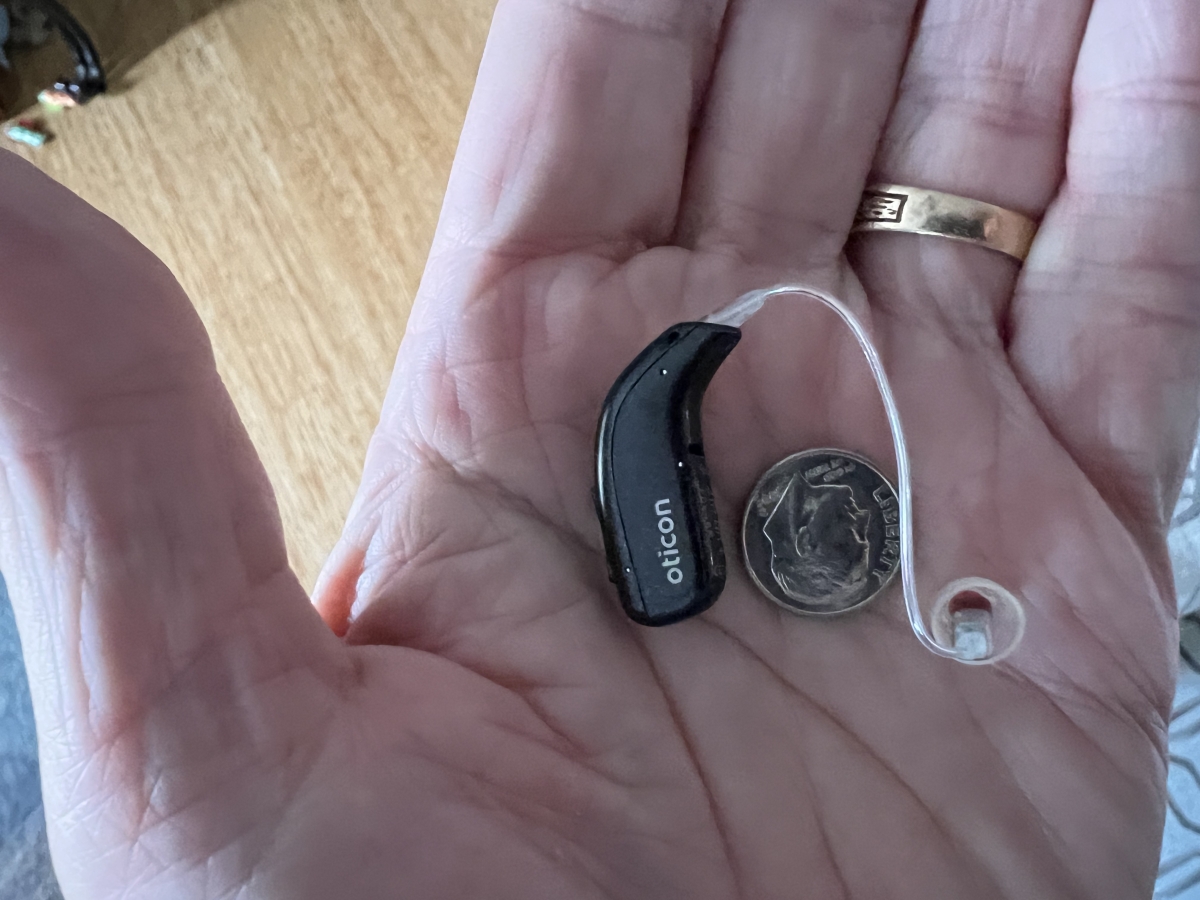


















![Buying Hearing Aids Online [Pros & Cons, Tips] Preview for the "Buying Hearing Aids Online [Pros & Cons, Tips]" video](https://cdn.ziphearing.com/dist/dynamic/files/videos/8/thumbnail/version/1/100/thumbnail.jpg)

![Rechargeable Hearing Aids [Pros & Cons] Preview for the "Rechargeable Hearing Aids [Pros & Cons] " video](https://cdn.ziphearing.com/dist/dynamic/files/videos/20/thumbnail/version/1/100/thumbnail.jpg)


